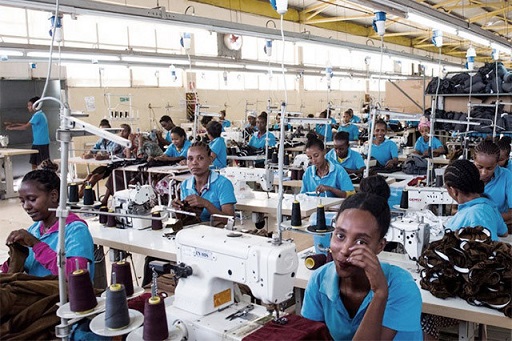
info.afrindex.com
China-Africa Trade Information Service

info.afrindex.com
China-Africa Trade Information Service

Image from Agoa.info
The rise of the fast fashion industry in the past few years has driven the booming of the second-hand clothing industry. Second-hand clothing markets in Ghana, Nigeria, Côte d'Ivoire, Tanzania, Benin, Uganda and Kenya are active in trading.
The global trade of second-hand clothing has a long and rugged history. It became prominent due to its affordability and to the surge in liberalization policies in the early 1990s. Second-hand clothing provides work for millions of resellers, distributors and market stall holders in developing markets, particularly in East Africa. But the decision by some countries to cut its imports of second-hand clothing in order to encourage local textile manufacturing has brought forth charges of protectionism from developed country exporters.
In an attempt to reconstruct the domestic garment industry, countries such as Rwanda are putting in place an industrial strategy to develop local textiles, apparel and leather sectors, taking a determined stance on imported second-hand clothing, which resulted in the US suspension of AGOA duty-free access to US markets. The exclusion from AGOA would affect about 3% of Rwanda's total exports to the US, that amounted to $1.5 million in 2017. Rwanda’s total exports that year amounted to $43.7 million.
However, the effects of the AGOA suspension on local economies may be mixed. It may stimulate local production of new clothing and footwear for the domestic market, but it could also negatively affect consumers through higher prices and reduced availability of clothing.
The garment and clothing industry globally are expected to double in the next 10 years, generating up to $5 trillion annually. In the USA alone, $284 billion are spent every year on fashion retail through the purchase of 19 billion garments.
This presents a tremendous opportunity for Africa at various levels of the value chain. From design to production to marketing, the fashion industry is a big and profitable business. The combined apparel and footwear market in sub-Saharan Africa is estimated to be worth $31 billion.
The textile and garment industry presents a unique opportunity for countries seeking to pursue industrialization. The sector helps to diversify the economy, and if geared towards exports, it can be a source of foreign exchange.
Let's look at the case of Ethiopia. The country has a target to generate $30 billion in exports from the textile and apparel sector by 2030 and the government has been building industrial parks to enhance the textile investment and productivity of the country. It’s no wonder that Ethiopia has attracted textile manufacturing giants like H&M and Primark.
But African countries face a host of challenges and opportunities alike. These include a weak business environment; a scarcity of skilled and unskilled workers, high cost of production, and low-level infrastructure among other challenges.